|
Gloria was born in Durham in the mid-1950s, and stayed in north eastern England,
raising her four teenage children with her husband of 20 years. She was a
teacher of English and drama, becoming head of year. As the times
changed, so did Gloria’s “day” job. Now she is the Head of
Information Communication Technology, which teaches
children age 11 to 16 to use computers and other forms of media to communicate
with the public. In her spare time she is pursuing a distance learning course
from City and Guilds*. Her study primarily focuses on embroidery, but her sewing
activities span the needle arts, but you will see she also makes contemporary
quilts. In part one of this article she shares the bone needlework collection
her In-Laws have gathered over the years. In the second part, Gloria talks about
her sewing activities in England and shows us her own collection of old
needlework tools, which are procured in a more modern way than her in-laws had
available.
My husband’s parents, Eric and Dorothy, have spent thirty years collecting
bone items, and many of them are embroidery related. They have one or two items
that date from the eighteenth century but most of their items date from the
nineteenth century. They have collected their pieces from antique shops, antique
fairs, and car boot sales in and around Gloucestershire and Durham.
Occasionally, they have found a piece whilst on holiday in various parts of
England.
They have quite a large collection now of hundreds of pieces. In the first ten
years things cost around about fifty pence or even less. These days they are
paying forty to fifty pounds for the same things.
Many items, the ones that I am fascinated in, are embroidery items. It always
amazes me that such fine, delicate work could be produced by things that were
often crude and difficult to work with. A lot of the work has survived the tests
of time proving the determination and achievement of those needlewomen. Working
by candlelight must have been a nightmare too.
I love to listen to Eric talking about his collection and the fact that he
remembers his mother using similar tools. Most of the items date from the
nineteenth century and were probably used by the common folk, who, in many
cases, will have carved the pieces themselves. After all we are resourceful when
there is a need.
Needles were
scarce and costly in this period of needlework. They had to be protected, as
they were small and easy to lose so needle cases were a must.
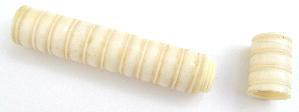
This is an example of a
needle case, with a screw top lid.
Below is another example but I have left the lid screwed on this time. This is a
bodkin case.
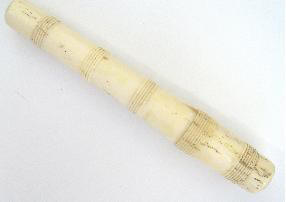
The following pictures
show it open with the original bodkins.
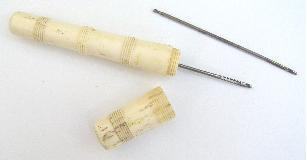 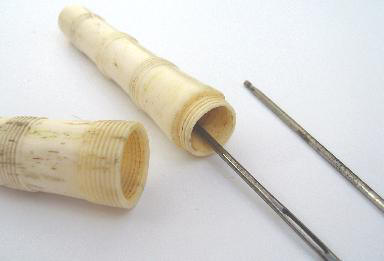
I love all of the different shapes and
designs of thread winders. These were used mainly to protect the fine silk
fibres used. The fibres were loose so they were wound onto a holder to stop them
from becoming tangled.
Notice that two of them still have the
price attached.
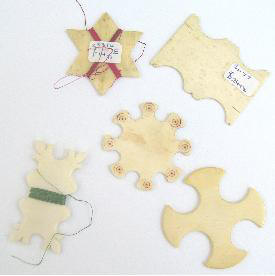
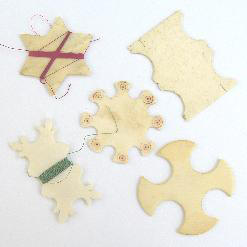
Antique Sewing & Needlework Tools - Collecting Bone, page 2
Article text
and pictures Copyright © 2007 by
Gloria Brunning. All rights reserved.
|